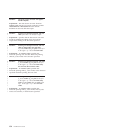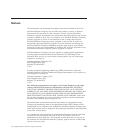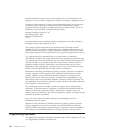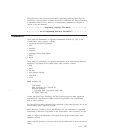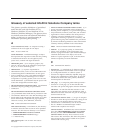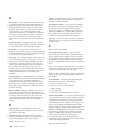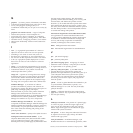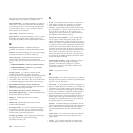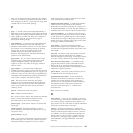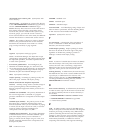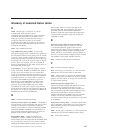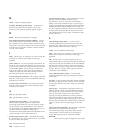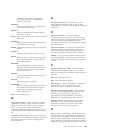maps the job to the user who submitted it. InfoPrint
Manager maps a local job ID to a global job ID.
logical destination. In InfoPrint Manager, an object to
which users or programs submit jobs. The destination
routes the jobs to one or more actual destinations that
represent output devices, such as printers, electronic
mail systems, or fax machines.
logical page. Synonymous with page.
logical printer. In InfoPrint Manager, a type of logical
destination. The logical printer routes jobs to one or
more physical printers, which represent printer devices.
M
Management Console. In InfoPrint Manager, a
graphical user interface for doing administrative tasks.
medium. In InfoPrint Manager, an object representing
the physical material on which the job prints.
metrics directory. In InfoPrint XT, the directory in
which it stores the metrics files for all the Xerox
resources that you load. The metrics directory is one of
these:
v %PDXTWORKDIR%\resources\common\metrics
v %PDXTWORKDIR%\resources\resgrp\metrics
v C:\OtherDirectory\metrics
message
catalog. (1) A file that contains all the
possible messages that can display during the
processing done by an application. (2) An indexed table
of messages. Two or more catalogs can contain the
same index values. The index value in each table refers
to a different language version of the same message.
Mixed Object Document Content Architecture
(MO:DCA). An architected, device-independent data
stream for interchanging documents.
Mixed Object Document Content Architecture-
Presentation
(MO:DCA-P). A subset of MO:DCA that
defines presentation documents.
MO:DCA. Mixed Object Document Content
Architecture.
MO:DCA-P. Mixed Object Document Content
Architecture-Presentation.
monospaced font. (1) A font in which the spacing of
the characters does not vary. (2) A font in which the
graphic characters have uniform character increments.
Contrast with proportionally-spaced font.
multiple-up printing. The arrangement of more than
one page of data on a single sheet of paper.
Synonymous with N_UP.
N
N_UP. (1) The partitioning of a side of a sheet into a
fixed number of equal size partitions. For example,
4-up divides each side of a sheet into four equal
partitions. (2) Pertaining to the number of forms that
you put together in a layout. Typical layouts are 2_UP,
4_UP, 8_UP, 16_UP, and so on. You specify N_UP
printing to use the maximum area of the print sheet.
Synonymous with multiple-up printing.
non-process runout (NPRO). (1) An operation that
moves paper or forms through the paper path of a
printer without printing. (2) The process of removing
the last few sheets of a job that has finished printing on
a continuous-forms printer. Typically, the last sheets of
a job remain in the printer, and the next job forces the
last sheets of the previous job out of the printer. This
procedure saves time when printing is continuous, but
when a delay exists between jobs, it is necessary to
remove the end of the last job. After a period of time,
as specified by an NPRO parameter, the printer clears
out the last sheets of the job.
normal duplex printing. Duplex printing for sheets
that are bound on the long edge of the paper,
regardless of whether the printing is in portrait
orientation or landscape orientation. Contrast with
tumble duplex printing.
NPRO. Non-process runout.
O
offset stacking. For certain printer devices, a function
through which the printer can offset the printed output
pages for easy job separation.
orientation. (1) In printing, the number of degrees an
object is rotated relative to a reference; for example, the
orientation of an overlay relative to the logical page
origin, or the orientation of printing on a page relative
to the page coordinates. Orientation usually applies to
blocks of information. Character rotation applies to
individual characters. (2) The angle between the top or
bottom edge of the page and the baselines of text, as
measured in a clockwise direction. (3) The rotation of
an element relative to a fixed reference.
operator. In InfoPrint Manager and InfoPrint XT, the
person responsible for printer devices. Also, this person
does a subset of tasks for InfoPrint Manager queues
and actual destinations, and does some job-related
tasks.
output writer. On a z/OS system, the part of the job
entry subsystem that receives job output from the
system spool.
overlay. (1) A resource object that can contain text,
image, graphics, and bar code data. Overlays define
162 InfoPrint XT Guide
|
|
|
|
|
|
|
|
|
|
|
|
|
|
|
|
|
|
|
|
|
|
|
|
|
|
|
|
|



